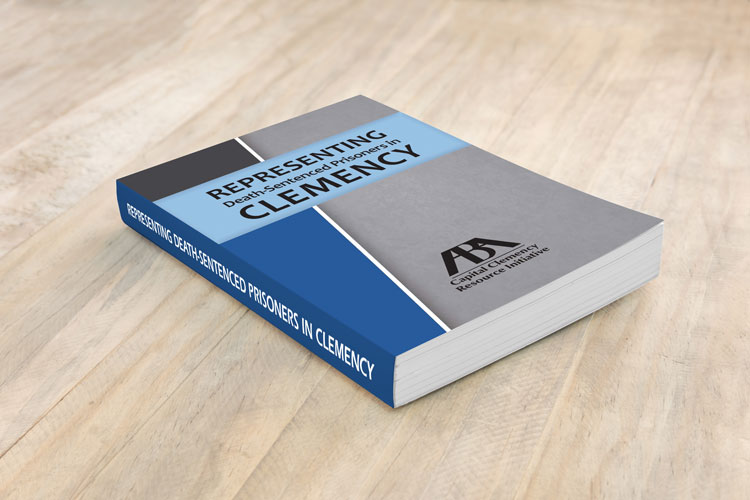ABA groups launch clemency information clearinghouse for death penalty cases

Shutterstock
Three years ago, ABA attorneys decided to address a major gap in resources for lawyers who defend capital cases: clemency information. Defendants who have exhausted their direct appeals and habeas petition rights often ask governors for mercy—but there wasn’t a lot of information available about how to do that effectively.
“In every state that we studied, there were insignificant resources for and attention paid to clemency, leaving it … too hollow to be comfortable for our profession,” says Misty Thomas, director of the Death Penalty Due Process Review Project. Thomas notes that the ABA has no position on the death penalty—but “if we’re going to have the death penalty, every single stage should be robust and meaningful.”
Too few training programs have been geared toward the clemency stage, says Emily Olson-Gault, director and chief counsel of the ABA Death Penalty Representation Project.
“In the capital defense world, there is a huge focus on training defenders to represent their clients in court proceedings, but clemency often gets short shrift and is often more of an afterthought,” Olson-Gault says. “It’s critically important that lawyers have the training and resources to effectively advocate for their clients in clemency—just like in every other part of a capital case.”

Photograph courtesy of Laura Schaefer
Thomas’ and Olson-Gault’s entities teamed up with the ABA Commission on Disability Rights. And in 2015 the ABA Board of Governors approved a grant for a project to gather clemency resources.
The Capital Clemency Resource Initiative launched in March at the URL capitalclemency.org. It offers state-specific information about clemency in death penalty states, plus past petitions, court decisions, academic papers and ABA policy on the subject.
The initiative also offers training materials, including a book written for the project titled Representing Death-Sentenced Prisoners in Clemency: A Guide for Practitioners.
Laura Schaefer is the primary author of the book and a staff attorney for the Death Penalty Representation Project. She says it’s a manual exclusively for lawyers who defend capital cases, including pro bono lawyers the project recruits and trains. ABA staff distribute the book upon request.
Another goal of the website is to educate, Schaefer says. “One part of what we are trying to do is increase public understanding of the clemency process in capital cases … and how it’s supposed to catch wrongful sentences,” she says.

Photograph courtesy of Laura Schaefer
CONSIDERING CLEMENCY
Clemency is a catchall term for pardons, commutations and other acts of mercy from state executive branches. Thomas says most death penalty prisoners ask for their sentences to be commuted to life. These requests—which in some states are automatic—often go through governors, state parole boards or both, and one hurdle for practitioners is knowing what the process is. Another, she says, is that lawyers must adjust their strategies for an audience that may not have a strong legal background.
Thomas says there are good reasons to consider those requests. In some cases, prisoners with intellectual disabilities or mental illness were convicted before advances in brain science cast doubt on their culpability. For prisoners who have been on death row for decades, age-related disability can also be an issue, as it is in an Alabama case the U.S. Supreme Court took up in February. In the case, inmate Vernon Madison can no longer remember the 1985 murder he was convicted of due to dementia and a stroke.
The heavy involvement of disability issues in these cases is one reason the Commission on Disability Rights was part of the project. Death row inmates “may have disabilities that affect their culpability, including but not limited to autism, bipolar disorder, intellectual disability, learning disability and schizoaffective disorders,” says Amy Allbright, director of the commission.
“It is key that attorneys and governmental decision-makers involved in the capital clemency process are aware of how these disabilities may affect culpability,” Allbright says.
And the rate of clemency grants for death penalty defendants seems to have grown in the past few years, Schaefer says. Clemency-related matters put the brakes on about five executions last year. And in February, Texas Gov. Greg Abbott granted clemency to inmate Thomas Whitaker on the eve of his execution, which Schaefer says is “almost unheard of.”
“I think we’re starting to see an upward trend in capital clemency grants, which means that being prepared to represent someone zealously in that process is all the more important now,” she says.
This article was published in the June 2018 ABA Journal magazine with the title "Asking for Mercy: ABA groups launch a clemency information clearinghouse for death penalty cases."



